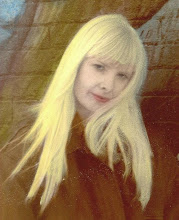 Clutch Cargo
Clutch CargoClutch Cargo is an animated television series produced by Cambria Productions and syndicated beginning on March 9, 1959. Notable for its very limited animation, yet imaginative stories, the series was a surprise hit at the time, and could be seen on 65 stations nationwide by 1960.
The stories centered around Clutch Cargo (voiced by radio actor Richard Cotting), described as "a writer and pilot with a muscular build, white hair and rugged good looks". As was typical of adventure serials, Clutch Cargo was sent around the world on dangerous assignments. Accompanying him on the assignments were his young ward Spinner and his pet dachshund, Paddlefoot. Actress Margaret Kerry, who provided the look, style, and movement of Tinker Bell in the 1953 Walt Disney Studios production of Peter Pan, provided both the voices and lips of Spinner and Paddlefoot. Live-action footage of an airplane was used as well, specifically that of a rare 1929 Bellanca C-27 Airbus. The attention to detail shown to the aircraft in the series is no doubt due to the fact that the creator of the series, Clark Haas, was a pioneer jet pilot.
Hal Smith, playing Otis Campbell on The Andy Griffith Show, was the voice of Clutch's grizzled, pith-helmeted friend Swampy, as well as numerous other characters.
In all, 52 Clutch Cargo adventures were produced and then serialized in five five-minute chapters each. The first four chapters naturally ended in cliffhangers, with the fifth chapter concluding the adventure. Haas explained the format of the show: "Each story is done in five five-minute segments so the stations can run one a day on weekdays, then recap the whole for a half-hour Saturday show. It's flexible and works very well."

Because of budgetary limitations and the pressure to create television animation within a tight time frame, the show was the first to use the "Syncro-Vox" optical printing system. Syncro-Vox was invented by television cameraman, and partner in Cambria Studios, Edwin Gillette (1909-2003) as a means of superimposing real human mouths on the faces of animals for the popular "talking animal" commercials of the 1950s. Clutch Cargo employed the Syncro-Vox technique by superimposing live-action human lips over limited-motion animation or even motionless animation cels.
To further cut costs, Gillette and special-effects man, Scotty Tomany supplemented Syncro-Vox with other time- and money-saving tricks. Haas explained, "We are not making animated cartoons. We are photographing 'motorized movement' and — the biggest trick of all — combining it with live action. This enables us to produce film at about one-fifth what it costs Hanna and Barbera. Footage that Disney does for $250,000 we do for $18,000."
Gillette and Tomany simulated action not by animation but in the real-time movement of either the camera or the cel itself. Other live-action shots were superimposed as a means of adding a certain degree of realism and to keep production costs down. For example, footage of real smoke was used for explosions.
Gillette said, "We are constantly discovering new dimensions. We have used real balloons to simulate bubble gum, developed windmills that really turn - mechanically; and Scotty can come up with the darndest snowstorms you've ever seen - on a turning drum. With a camera capable of zooming, walkers that jog, and judicious cutting away from costly animated movement we manage to do things which otherwise would be impossible. With fewer than a dozen men we produce the equivalent of a half-hour film every week."
 Occasionally traditional animation was also employed in the series, notably in the episode The Lost Plateau, in which brief segments of animated dinosaurs stood out. The character Paddlefoot, with his scratching and comical movements, was singled out as the most common cause of "skyrocketing" animation costs at Cambria.
Occasionally traditional animation was also employed in the series, notably in the episode The Lost Plateau, in which brief segments of animated dinosaurs stood out. The character Paddlefoot, with his scratching and comical movements, was singled out as the most common cause of "skyrocketing" animation costs at Cambria.
The musical soundtrack to Clutch Cargo was, in its own way, as limited, and yet as inventive within those limitations, as the animation. Jazz musician Paul Horn provided a score using nothing more than bongos and a flute.
Haas summed up the lasting appeal of Clutch Cargo: "Let's face it, Clutch is a square. But there's a place for him. One thing about this kind of business: It's fun. That's because what you can do is limited only by your ingenuity." 


No comments:
Post a Comment